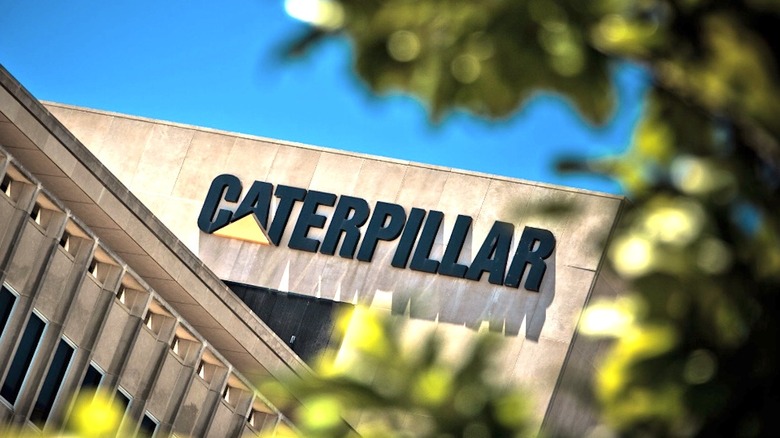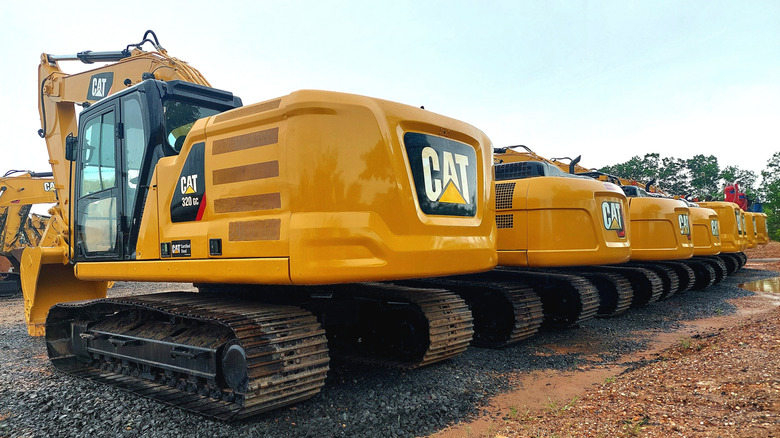Who Owns Caterpillar And Where Is Its Construction Equipment Made?
In the construction field, few sights are as instantly identifiable as the distinctive yellow livery that adorns equipment bearing the Caterpillar logo. That hasn't always been the case, of course. While the Caterpillar brand has been around for more than a Century at this point, its equipment didn't officially go yellow until the early 1930s. That move marked a stark change from the blue and gray of generations past, and, arguably, stands as the most important move Cat ever made in terms of brand recognition.
That move was made just a few short years after the company came into being, with C.L. Best and Benjamin Holt merging their separate farm equipment factions in 1925 to form Caterpillar Tractor Company. However, Best and Holt didn't call the shots for their bustling farm equipment venture for very long. That's because their company grew exponentially in the immediate wake of the merger, leading the duo to make their ownership exit just a few years after it began.
No, Best and Holt didn't sell Caterpillar to an interested third party. Nor were they pushed out in an epic corporate overthrow. Rather, in 1929, Caterpillar became a publicly traded company, a move that essentially turned ownership control over to investors, shareholders and, presumably, some sort of board of directors. The company went public on December 2 of that year, doing so under the name of Caterpillar Tractor Company. In 1986, the listing name officially changed to Caterpillar, Inc., and remains that today.
CAT equipment is largely made in two countries
Right about now, you might be wondering where in the world Caterpillar makes its construction equipment, as well as certain essential tools and accessories. That's even more likely given the American origins of the Caterpillar brand and the fact that it maintains its global headquarters in Irving, Texas. Fans of the brand might be happy to know that CAT also maintains significant manufacturing operations in the country.
In fact, the company currently claims to operate manufacturing facilities in 15 U.S. states, as well as remanufacturing plants and forward-thinking proving grounds in several others. Per Caterpillar, some are single-source manufacturing locations for major construction equipment, with plants in Decatur and East Peoria, Illinois, producing large mining trucks and large track-type tractors, and large motor graders originating in North Little Rock, Arkansas. Meanwhile, gas turbines are made in San Diego, California, and small track-type tractors are coming out of Athens, Georgia. The company also makes its wares in Alabama, Indiana, Kansas, Kentucky, Minnesota, North Carolina, Oklahoma, South Carolina, Tennessee, Texas, and Wisconsin.
Despite Caterpillar's efforts to manufacture its wares Stateside, not all of its equipment originates from a U.S. production facility. Many of its products are actually produced in China for import to America and other parts of the globe. And yes, that has been true for about 45 years now, with CAT operating facilities in Suzhou, Wuijiang, Qingzhou, Wuxi, Xuzhou, Tianjin. There, the company purports to make everything from hydraulic excavators, track-type tractors, wheel loaders, and soil compactors, to motor graders, paving products, medium and large diesel engines and generator sets.

